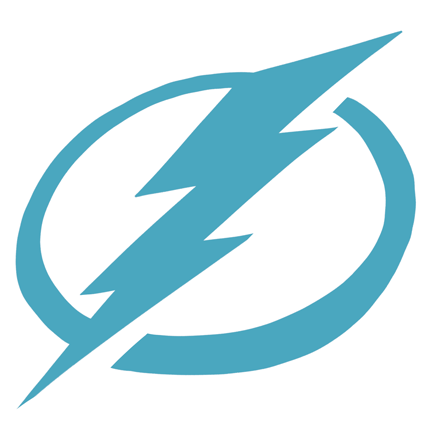Tampa Bay Lightning captain Steven Stamkos will have to wait until the summer to decide his future. While his current contract with Tampa is set to expire at the end of the 2015-16 season, Stamkos’s potential departure was delayed after general manager Steve Yzerman confirmed his captain would not be traded at the deadline.
The Toronto Maple Leafs are the current favorites to land Stamkos, arguably the most desirable pending unrestricted free agent. The temptation is high for the Ontario native, since there is a strong possibility he could assume team captaincy with Dion Phaneuf’s departure to Ottawa.
Currently, there is still hope for Tampa Bay to lock up their captain long-term. Tampa was a legitimate Stanley Cup contender last season and with the imminent trade of Jonathan Drouin, there is more importance in attempts to retain their franchise player.
It’s no secret that the Lightning will have to splash the big bucks to keep Stamkos in Tampa. There is also no doubt that Stamkos has earned himself a contract of US$10 million per season for the next little while. In terms of contract length, he could be looking at between six and 10 years – possibly even a lifetime deal.
Countless examples have seen NHL superstars sign contracts that keep them in a franchise until their 40s. Stamkos’s pedigree surely places him within this group of players.
However, Yzerman shouldn’t be duped into taking the severe risk that has become a curse with many of the star players in recent years who are locked up long-term. Truth be told, any contract length that surpasses the 10-year mark has proven to be poisonous to NHL teams working against the salary cap.
Long-term disasters
The Bolts don’t have to look far for an example of a long-term contract failing. Lightning management locked up former captain Vincent Lecavalier in 2008 to an 11-year, US$85-million contract. Despite his superstar status, Lecavalier’s struggles with injuries shortly thereafter forced the Lightning to buy out the remaining seven years of his contract. To this day, his buyout is considered the most expensive in NHL history.
Other examples of recent lifetime contracts for franchise skaters include Ilya Kovalchuk and Roberto Luongo. Kovalchuk retired from the NHL favouring a return to Russia in 2013, three years after signing a 17-year contract with New Jersey. Meanwhile, the Canucks traded Luongo five years into his 12-year contract after he could not replicate the form that brought Vancouver to the 2011 Stanley Cup final.
At the age of 25, Stamkos still has plenty of firepower left in his game. With the average NHLer reaching the pinnacle of their career in their late 20s, the most sensible option for Yzerman is to offer Stamkos an extension in the five-year region.
With such a contract, the Bolts will be able to experience the best years of their captain’s career.
Should Stamkos then request a trade – likely to Toronto – the Leafs would then have less of a problem fitting in a shorter-term contract against their salary cap.
The next big thing in Toronto?
If Stamkos is unwilling to listen to offers from the Lightning, Yzerman will be expected to take advantage of the 2016 NHL Draft before letting his captain go to free agency on July 1. From that point on, the former Ontario Hockey League standout is most likely destined for Toronto.
The hockey market in Ontario’s capital is much more demanding than that of Tampa, and adding a bona fide scorer like Stamkos will make Toronto certain contenders in the NHL.
In such a case, Stamkos would be the best franchise player in Toronto since Mats Sundin. The comparison to the Leafs legend is fair, however it pressures Stamkos into a situation where he would need to lead Toronto into the playoffs on a consistent basis – something the franchise has not accomplished since 2004.
Regardless of the competitiveness of a specific hockey market, Stamkos is expected to live up to his pedigree game after game. Yet, having spent his entire career in a relatively tame market in Tampa Bay, the 25-year-old will need to adjust to the challenge of representing a franchise that has not tasted from Lord Stanley’s mug in nearly 50 years.
Possibilities
The question, if the Stamkos saga escalates to a point of certain departure, is how the Maple Leafs would land Stamkos negotiation rights in case GM Lou Lamoriello wants to talk business before July 1. Yzerman is not afraid to pull the trigger on a superstar trade. If it involves a deal including Stamkos to Toronto, expect a few top skaters and prospects to head to Tampa.
A youthful return would surely compensate for the loss of a 60-goal scorer in 2011-12. With the delayed upcoming of defenseman Slater Koekkoek, the Lightning will be keen in including the 2012 10th overall pick along with Stamkos’s rights for defensive stalwarts Jake Gardiner or Morgan Rielly, along with two of Toronto’s top-rank prospects and high draft picks. After all, the Leafs have an impressive teenage trio in their system that consists of Kasperi Kapanen, William Nylander, and Mitch Marner.
If the destination isn’t Tampa Bay or Toronto, there are plenty of markets that suit what Stamkos puts to the table. These clubs include Boston, St. Louis, Anaheim, and both New York teams.
While these clubs may not be able to support a salary of Stamkos’s figures, allocating the cap space to fit the 2008 first overall pick would benefit them greatly. The Bruins, Blues, Ducks, Islanders, and Rangers already have stable defensive corps and consistent goaltending allowing them to prioritize any chances in their offensive units.
Stamkos would certainly add some scoring depth to take the pressure off John Tavares, Rick Nash, and Vladimir Tarasenko in New York and St. Louis. Not to mention combining with pure playmakers in a deadly powerplay unit.
In the cases of St. Louis and Anaheim, Stamkos would be a timely inheritance for aging leaders in both franchises such as Ryan Getzlaf or David Backes.
For the Bruins – possibly the best fit of any team – Stamkos would add legitimate primary scoring to a team with very distributive scoring amongst all four lines. Since losing franchise player Joe Thornton in 2005, Boston hasn’t had a defined point-producer. Despite winning the 2010-11 Stanley Cup, their trade of power forward Milan Lucic to Los Angeles last summer didn’t help in the goal-scoring department.
Centres David Krejci and Patrice Bergeron play versatile forward roles and would move to the wing in order to fit Stamkos into the lineup. Bergeron specifically would greatly benefit from playing a line with Stamkos, having played alongside Sidney Crosby at various stages of his junior career. The two were paired at the World Juniors and the last two Olympics – all gold medal triumphs.
Lastly, with the final chapter of Zdeno Chara’s NHL career coming to a close, the potential to wear the “C” for a historic franchise would get any NHL elite such as Stamkos excited to step into the spotlight.





